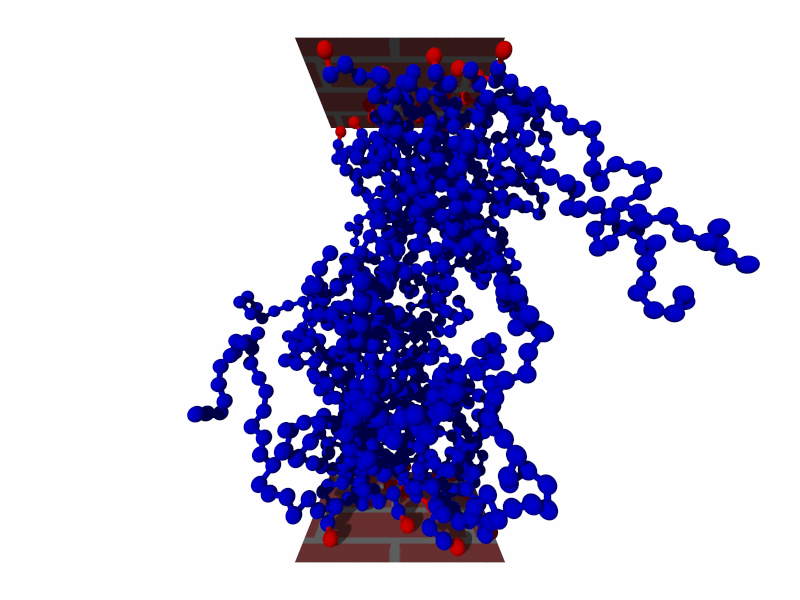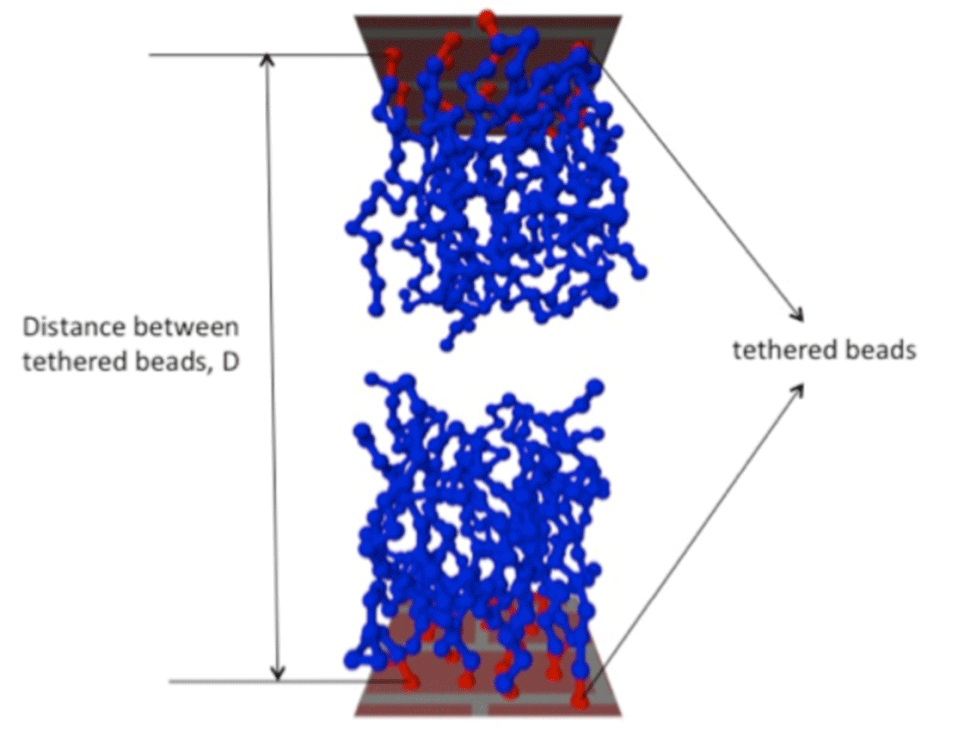Modeling Lubrication with Polymer Brushes
We apply a variation of a well-established molecular coarse-grained brush model [1,2,3]. The strength of using a coarse-grained description of polymers for the questions addressed in this work lies in the length and time-scales that can be accessed at moderate computational cost, compared with fully atomistic simulations, while still exploring the dynamical evolution of a brush system. It also has the advantage of being relatively free of assumptions compared to more macroscopic models, such as self-consistent mean-field theories.
The polymer brushes are represented by a set of semiflexible, linear multibead-spring model chains that exhibit excluded volume effects, and are permanently tethered to the substrate by one end. Using this approach we simulate permanently chemisorbed polymer chains on a substrate. This multibead-spring model, using a nonlinear force law (finitely extendable nonlinear elastic, FENE) for bonded interactions, is known to capture the physical behavior of polymer brushes [2,4].

References
- Simple models for complex nonequilibrium fluids, M. Kröger; Phys. Rep.; 2004; 390, 453-551.
- Interfacial sliding of polymer brushes: A molecular dynamics simulation, G.S. Grest, Phys. Rev. Lett; 1996; 76, 4979-4982.
- Normal and shear forces between polymer brushes, G.S Grest, Adv. Polym. Sci; 1999; 138, 149-183.
- Rheology of a polymer brushes: A Brownian dynamics study, P.S. Doyle, E.S.G. Shaqfeh, A.P. Gast; Macromolecules; 1998; 31, 5474-548.

